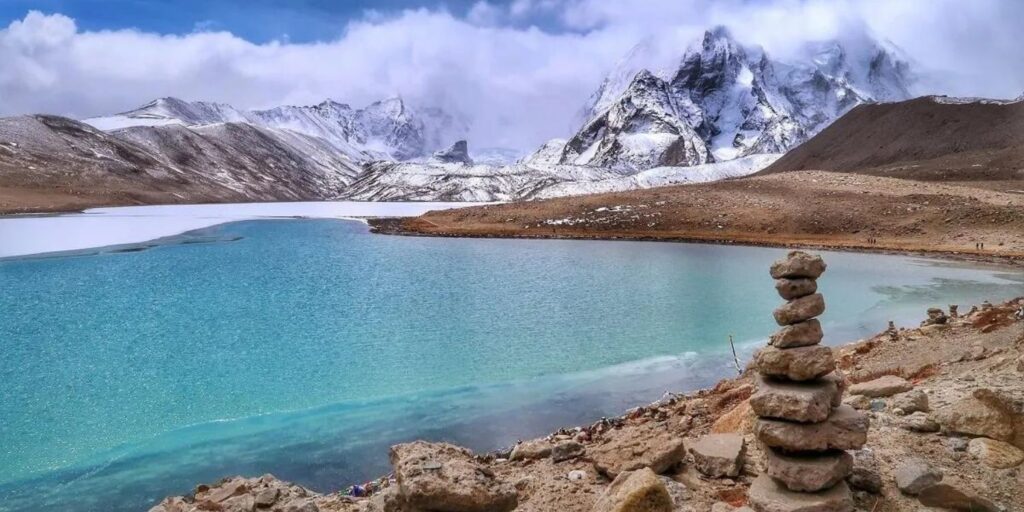Welcome to the places to visit in North East India Himalayan haven with diverse landscapes, cultures, and warm hospitality.
The North East offers a unique blend of natural beauty and cultural richness, comprising eight states: Tripura, Arunachal Pradesh, Assam, Manipur, Sikkim, Meghalaya, Mizoram, and Nagaland.
This comprehensive guide will explore places to visit in north east India, taking you on an enchanting journey through this less-explored country.
1. Kaziranga National Park, Assam
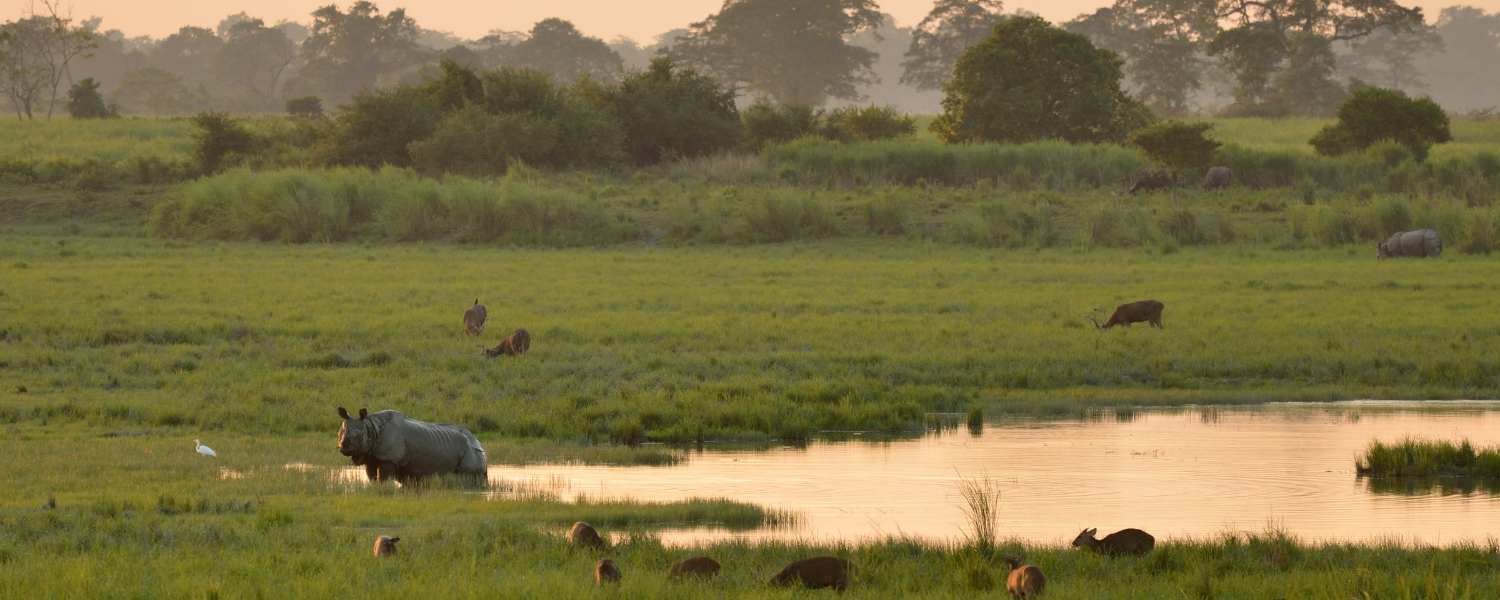
Our journey of Places To Visit In North East India begins in Assam, home to the iconic Kaziranga National Park, which shelters the endangered one-horned rhinoceros.
Spread across the floodplains of the Brahmaputra River, Kaziranga is also home to tigers, elephants, and many bird species.
Embark on a thrilling jeep safari to witness the incredible biodiversity and lush landscapes that make Kaziranga a must-visit destination.
2. Tawang Monastery, Arunachal Pradesh

Venturing into the mystical land of Arunachal Pradesh, Tawang Monastery stands as a symbol of spirituality and architectural brilliance.
Explore the intricately decorated prayer halls, learn about the rich Tibetan Buddhist culture, and immerse yourself in the tranquility that permeates this sacred place.
3. Dawki, Meghalaya

Known for its crystal-clear waters, Dawki is a hidden gem in Meghalaya.
The Umngot River, with its transparent waters, creates a surreal experience for visitors. Boating on the river provides a unique perspective, allowing you to see the riverbed and the diverse aquatic life beneath it.
The nearby Dawki Bridge offers stunning views of the surrounding hills, making it a photographer’s paradise.
4. Loktak Lake and Keibul Lamjao National Park, Manipur

In the heart of Manipur lies Loktak Lake, the largest freshwater lake in North east India. Explore the floating islands which are unique to this region.
Additionally, visit the Keibul Lamjao National Park, home to the endangered Sangai deer.
5. Aizawl, Mizoram

The capital city of Mizoram, Aizawl, is a vibrant blend of modernity and tradition and a must Places To Visit In North East India.
The amazing markets are where you can buy exquisite handwoven textiles and traditional Mizo handicrafts.
Take advantage of the opportunity to visit the Mizoram State Museum, which provides insights into the state’s rich cultural heritage.
The Durtlang Hills and Reiek Tlang offer panoramic views of Aizawl’s picturesque landscapes.
6. Hornbill Festival, Nagaland
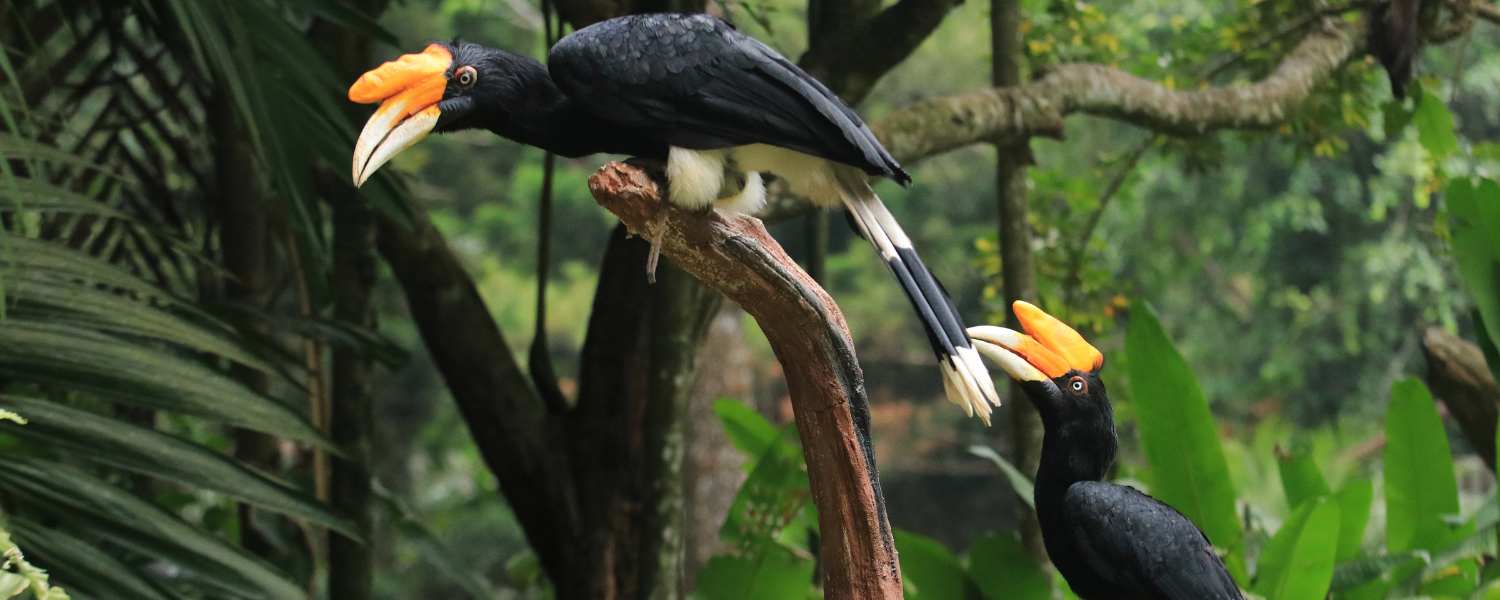
For a cultural extravaganza, plan your visit to Nagaland during the Hornbill Festival—places to Visit in North east India. Held annually in December, this festival celebrates the diverse indigenous tribes of the state.
Experience traditional Naga music, dance, and folklore, and indulge in local delicacies.
The vibrant weather and the chance to interact with the Naga tribes make the Hornbill Festival a unique and unforgettable experience on our list of places to visit in north east India.
7. Nathula Pass, Sikkim

Nathula Pass, located on the Indo-China border, is a breathtaking mountain pass in Sikkim. Surrounded by snow-capped peaks, it offers panoramic views of the Himalayas.
Guests can feel the thrill of standing at the ‘roof of the world’ and witness the border trade between India and China.
Due to its high altitude, Nathula Pass is accessible only during specific months.
8. Neermahal, Tripura
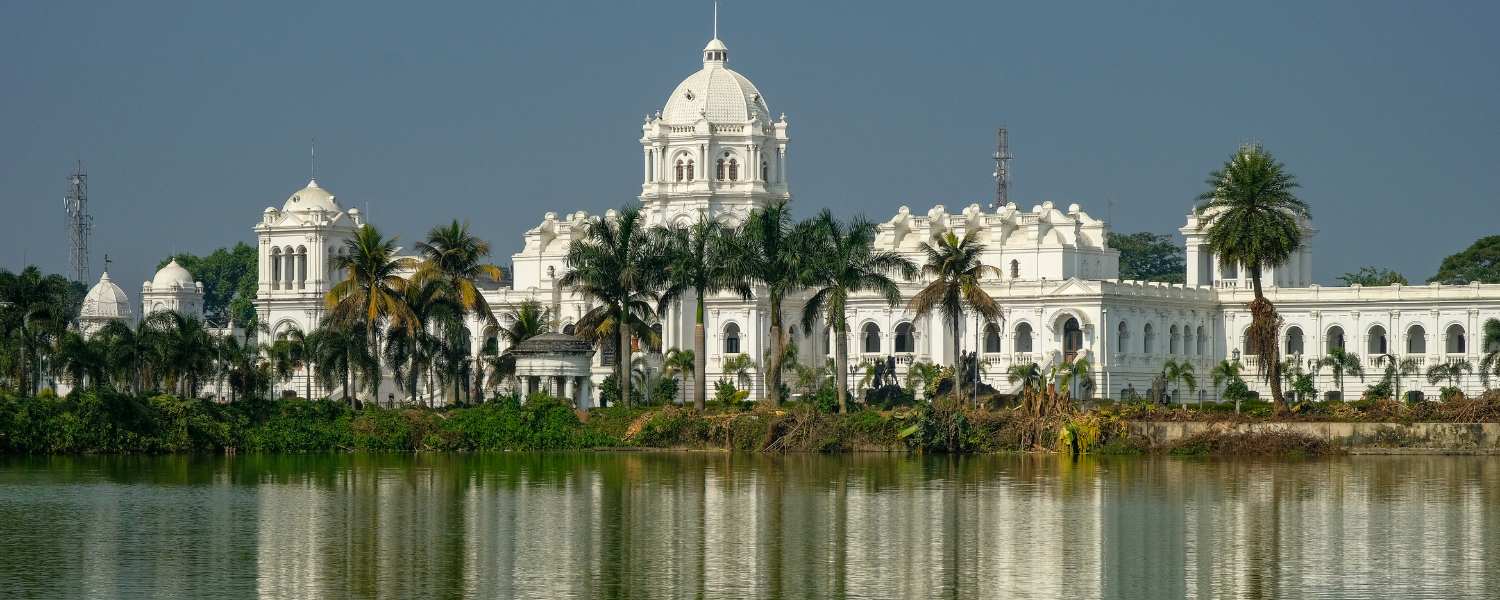
In the heart of Tripura, Neermahal (Water Palace) is a captivating architectural marvel amid the Rudrasagar Lake.
This palace, built by Maharaja Bir Bikram Kishore Debbarman in the 1930s, combines Hindu and Muslim architectural styles.
The serene surroundings and the reflection of Neermahal on the lake’s waters create a surreal atmosphere, making it a must-visit destination for history and architecture enthusiasts in our list of Places To Visit In North East India.
Floating on the serene waters of Rudrasagar Lake in Tripura, Neermahal, or the “Water Palace,” is a mesmerizing architectural gem.
This palace, blending Hindu and Islamic architectural styles, is a testament to Tripura’s cultural fusion and historical richness.
Built by Maharaja Bir Bikram Kishore Debbarman in the 1930s, Neermahal was envisioned as a summer residence amidst the lake.
The palace’s white marble façade and distinctive towers create a picturesque reflection on the lake’s calm waters.
Neermahal’s strategic location enhances its allure, offering panoramic views of the surrounding landscapes.
9. Majuli, Assam

Known as the largest river island in the world and one of the Places To Visit In North East India for a river island experience.
Majuli is a serene retreat in the Brahmaputra River. Accessible by ferries, this cultural hotspot is dotted with ancient Vaishnavite monasteries (Satras) and offers a glimpse into Assam’s traditional dance and music.
Explore the vibrant Mishing villages, witness traditional mask-making, and enjoy the tranquil beauty of the river island.
Majuli is home to numerous Satras and Assamese Vaishnavite monasteries, where the art of Sattriya dance and traditional crafts thrive.
The island’s landscape blends fertile farmlands, wetlands, and meandering rivers, creating a serene ambiance.
The migratory birds that flock to Majuli during winter add to the island’s ecological significance.
Visitors to Majuli can explore the Satras, witness traditional mask-making, and engage in boat rides along the Brahmaputra.
The island’s annual Raas Leela festival, celebrating the divine love of Radha and Krishna, attracts pilgrims and tourists alike. Majuli, with its cultural vibrancy and natural beauty, offers an experience that is not ordinary.
10. Ziro Valley, Arunachal Pradesh

The Ziro Music Festival, held against the stunning backdrop of the valley, attracts music enthusiasts worldwide.
Trekking through the lush greenery, visiting traditional Apatani villages, and experiencing the unique agricultural practices make Ziro a must-visit destination.
Ziro Valley is adorned with terraced rice fields, bamboo huts, and the majestic backdrop of the mountains.
The Apatani people, with their distinctive customs and sustainable agricultural practices, add a cultural dimension to the valley.
The annual Ziro Music Festival further enhances the valley’s charm, attracting music enthusiasts from across the globe.
Beyond its cultural richness, Ziro Valley offers trekking opportunities to explore the surrounding hills and discover hidden villages.
The hospitality of the Apatani people makes every visitor feel like a part of their close-knit community.
Ziro Valley, with its scenic landscapes and cultural vibrancy, beckons travelers to step off the beaten path and embrace the tranquility of Arunachal Pradesh.
11. Mawsynram, Meghalaya

Mawsynram, or the wettest place on Earth in Meghalaya, offers a surreal experience with its relentless rainfall.
The verdant landscapes, living root bridges in Cherrapunji, and the mysterious Mawphlang Sacred Forest contribute to the mystical charm of this region.
Embrace the monsoon magic and explore the natural wonders that make Mawsynram a fascinating destination.
The village receives staggering rainfall, creating picturesque waterfalls, vibrant green meadows, and crystal-clear streams.
The living root bridges, a marvel of traditional engineering using living tree roots, add to the enchantment of Mawsynram.
Exploring the village and its surroundings is like stepping into a fairytale world where nature reigns supreme.
Mawsynram is not just about rain; it’s about embracing the beauty that comes with it. The locals, known for their warmth and hospitality, share the secrets of coexisting with the relentless rain.
A visit to Mawsynram is an immersion into the poetry of nature, where raindrops compose melodies that echo through misty valleys.
12. Loktak Lake and Keibul Lamjao National Park, Manipur
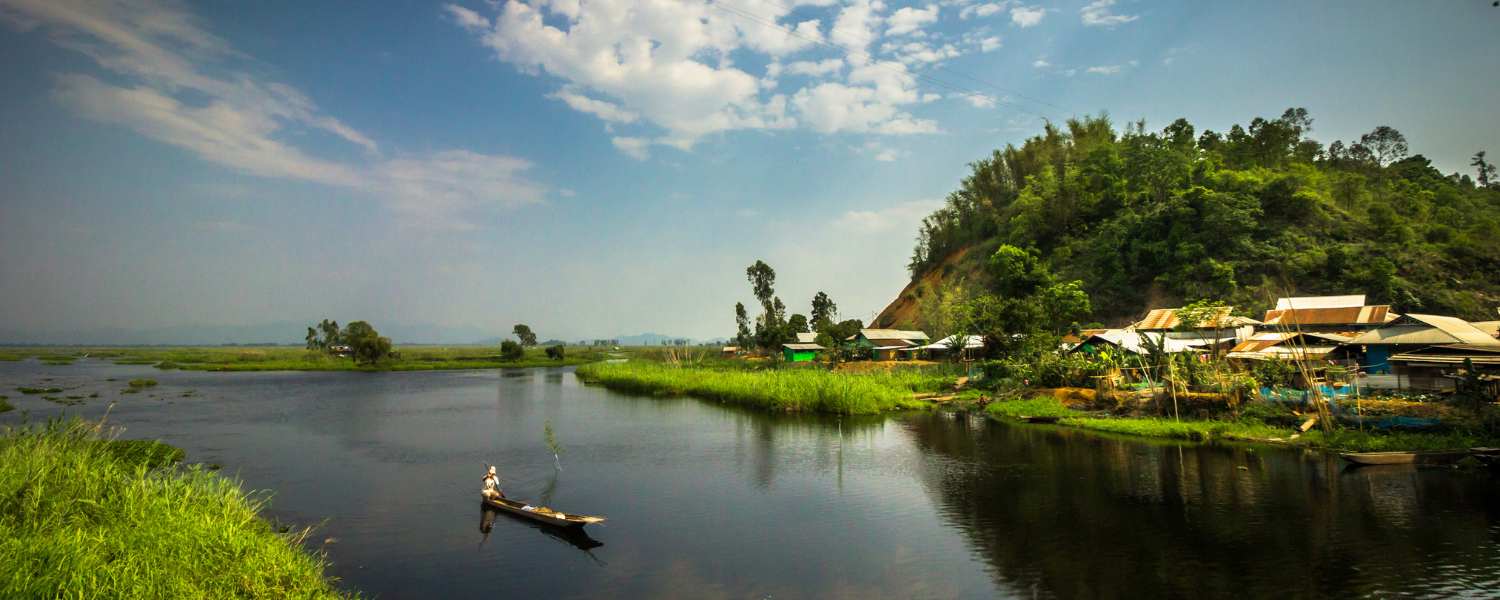
In the heart of Manipur lies Loktak Lake, the largest freshwater lake in North east India. Additionally, visit the Keibul Lamjao National Park, home to the endangered Sangai deer.
Loktak Lake’s organic matter and vegetation pundits float on the surface, creating an otherworldly landscape.
The park within the lake provides a habitat for diverse flora and fauna, with the Sangai deer being the star attraction.
Visitors can explore the lake through boat rides, witnessing the harmonious coexistence of nature and wildlife.
Keibul Lamjao National Park, with its marshy terrain and unique ecosystem, offers a distinctive wildlife experience.
The Sangai deer, often called the “dancing deer,” adds a touch of mystique to the park. Together, Loktak Lake and Keibul Lamjao National Park present a captivating blend of natural beauty and ecological diversity, making them must-visit destinations in Manipur.
13. Palak Dil, Mizoram
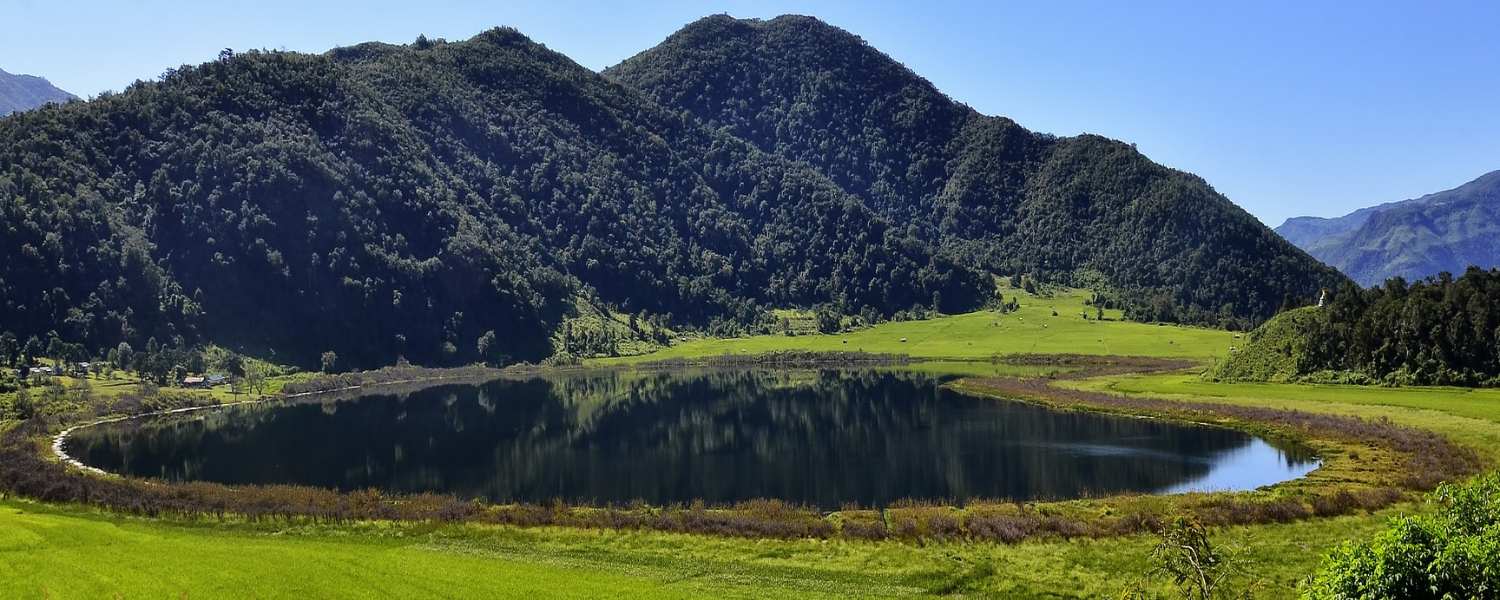
Known as the Pala Lake, Palak Dil is the largest lake in Mizoram, surrounded by lush green hills and dense forests. The tranquil ambiance and pristine waters make it an ideal destination for nature lovers and photographers.
Palak Dil shimmers like a hidden jewel in Mizoram’s pristine landscapes.
Several small streams feed the lake, and its crystal-clear waters reflect the vibrant hues of the surrounding landscape.
Palak Dil holds cultural significance for the Mizos, often associated with myths and folklore. Standing by the lake’s edge, you can feel the tranquility and serenity that define this hidden paradise.
14. Dzukou Valley, Nagaland

Dubbed as the ‘Valley of Flowers of the Northeast,’ Dzukou Valley in Nagaland is a trekker’s paradise.
The trek to Dzukou offers breathtaking views of rolling hills, crystal-clear streams, and a carpet of colorful blooms. The simplicity and beauty of Dzukou Valley make it a hidden gem for nature enthusiasts.
Hidden away in the northeastern state of Nagaland, Dzukou Valley emerges as a pristine paradise for nature enthusiasts and trekkers.
The valley is often called the “Valley of Flowers” of the East. “Dzukou” translates to “Cold Water” in the local dialect.
The trek to Dzukou Valley is an enchanting journey through dense forests, crystal-clear streams, and expansive meadows adorned with a riot of colors from blooming flowers.
Rhododendrons, lilies, and alpine flowers carpet the valley, creating a mesmerizing visual symphony.
Campers and trekkers find solace in Dzukou Valley’s serene ambiance. The Japfu Peak, overlooking the valley, adds an adventurous dimension to the trek.
The valley’s untouched beauty and the opportunity to witness a wide variety of flora make it a haven for those seeking a rendezvous with nature in its purest form.
15. Gurudongmar Lake, Sikkim

Surrounded by snow-capped mountains, the lake remains frozen during the winter, creating a mesmerizing landscape.
The journey to Gurudongmar Lake offers panoramic views of the Eastern Himalayas, making it a must-visit destination for those seeking adventure and spiritual tranquility.
At an altitude of over 17,000 feet, Gurudongmar Lake in Sikkim is a breathtaking testament to nature’s grandeur.
Named after Guru Dongmar, a revered figure in Sikhism, the lake holds immense religious significance.
Surrounded by snow-capped peaks, this high-altitude lake is one of the highest in the world.
Gurudongmar Lake is not just a visual spectacle; it’s a place of spiritual reverence. Pilgrims and tourists alike come to witness the pristine beauty and seek blessings from the sacred waters.
The lake remains frozen for a significant part of the year, adding to its ethereal charm.
16. Unakoti, Tripura
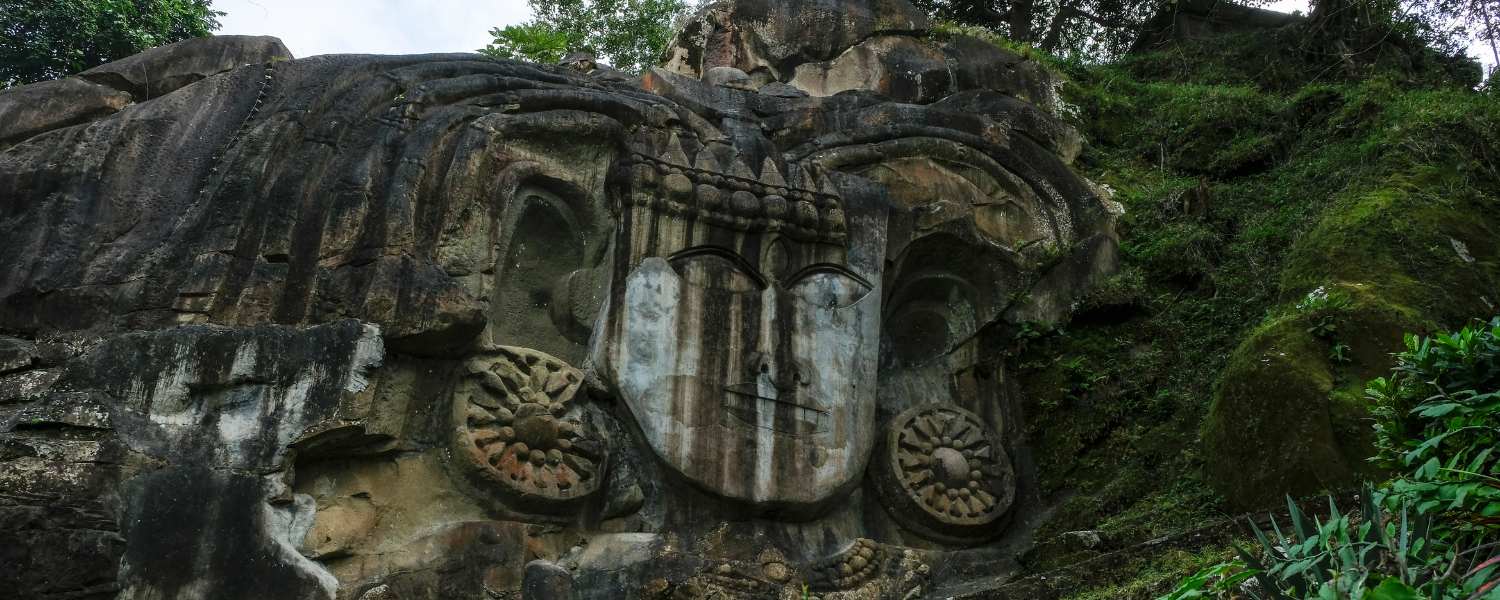
Legend has it that the sculptures represent the work of a sculptor who carved less than a crore (ten million) images.
Explore the rock reliefs, ancient temples, and the mystical atmosphere surrounding Unakoti, making it a distinctive destination in the Northeast.
In the northeastern state of Tripura lies Unakoti, an archaeological and pilgrimage site that unravels a mystical tapestry of rock-cut sculptures.
The name “Unakoti” translates to “one less than a crore,” and the site is believed to have the country’s largest collection of rock-cut images.
The site is dotted with colossal rock reliefs of Shiva, Ganesha, and other deities, each telling a story from mythology.
The pilgrimage site attracts devotees during the Ashokastami Mela, an annual grand festival.
Beyond its religious significance, Unakoti is a treasure trove for history enthusiasts and nature lovers. The lush green surroundings and the natural rock formations add to the mystical ambiance.
Unakoti, with its ancient allure, offers a glimpse into the cultural and historical richness of Tripura.
17. Shillong, Meghalaya
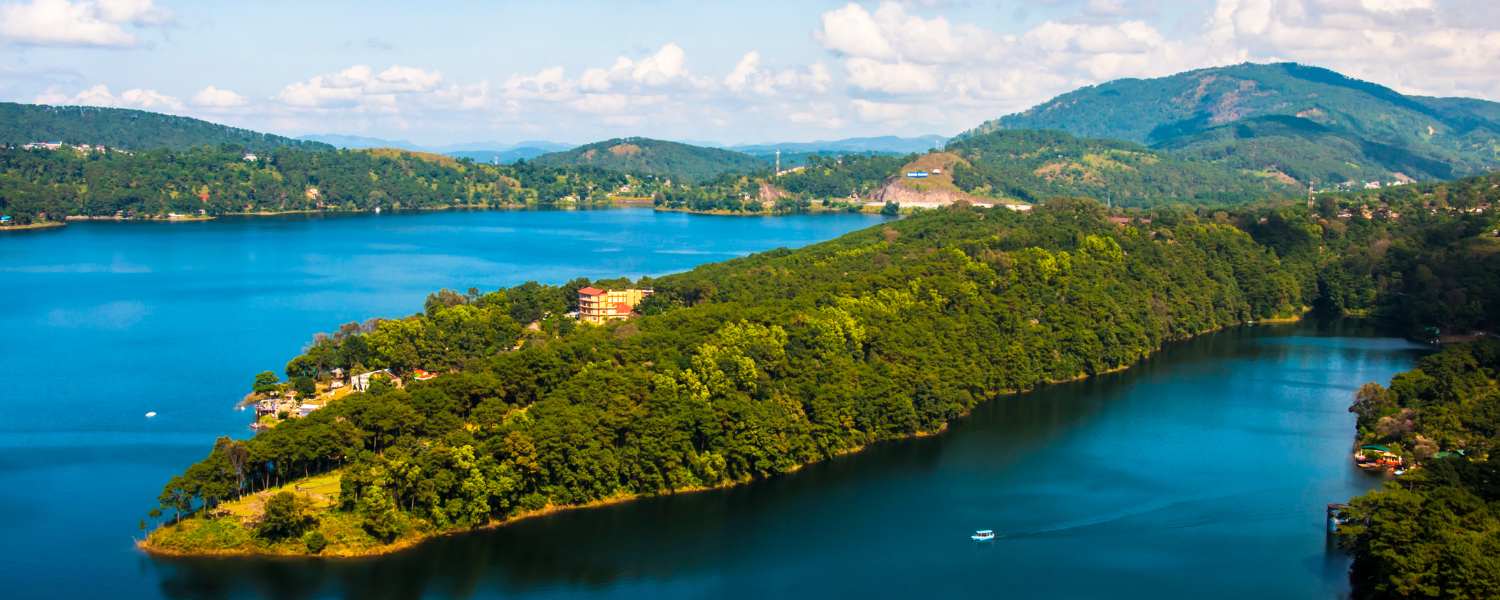
The ‘Scotland of the East,’ Shillong is the capital of Meghalaya and a charming hill station known for its climate, landscapes, and vibrant culture.
If you love to see scenic beauty then there are many places to visit in North east India you can Visit Ward’s Lake, explore the Don Bosco Centre for Indigenous Cultures, and stroll through the bustling Police Bazaar.
Shillong’s colonial architecture, friendly locals, and thriving music scene make it a delightful stop on your Northeast Odyssey.
Fondly known as the “Scotland of the East,” Shillong captivates visitors with its lush landscapes, pleasant climate, and unique blend of modernity and tradition.
The capital city of Meghalaya, Shillong, offers a delightful escape into the lap of nature.
Shillong Peak provides panoramic views of the surrounding hills, while Ward’s Lake offers a serene, relaxing spot.
The bustling markets and vibrant cafes add a touch of urban charm to this otherwise idyllic destination.
Shillong is not just about scenic beauty; it resonates with a rich cultural tapestry. The city hosts music festivals, promoting local and international talent, and the colonial architecture reflects its historical roots.
As you stroll through the charming streets of Shillong, you’ll discover a perfect harmony between nature’s wonders and human creativity.
18. Sualkuchi, Assam

Known as the ‘Manchester of the East,’ Sualkuchi in Assam is famous for its silk weaving industry.
Explore the silk weaving villages, witness the intricate process of producing Assamese silk, and shop for exquisite silk sarees and chadors.
The annual Sualkuchi Silk Festival showcases the region’s rich textile heritage, making it a must-visit for those interested in traditional craftsmanship.
Known as the “Manchester of the East,” Sualkuchi in Assam weaves a vibrant tapestry of culture and craftsmanship.
This quaint town is renowned for its traditional handloom industry, particularly the exquisite Muga silk.
As you step into Sualkuchi, you are greeted by the rhythmic sounds of looms and the sight of skilled artisans creating intricate designs.
The handloom industry in Sualkuchi has been a part of Assam’s cultural heritage for centuries. The Muga silk, known for its golden luster, is a region’s specialty.
Visitors can explore the bustling markets adorned with a myriad of silk products, from sarees to chadors, each a testament to the artistry and skill of the weavers.
Beyond the looms, Sualkuchi invites travelers to delve into Assam’s cultural vibrancy. The town hosts traditional festivals, where locals showcase their rich customs through dance, music, and rituals.
Exploring Sualkuchi is not just a shopping spree; it’s an immersion into the heart of Assam’s artistic and cultural legacy.
19. Gurudwara Nanak Lama Sahib, Arunachal Pradesh

Located in the picturesque town of Tawang, Gurudwara Nanak Lama Sahib is a Sikh pilgrimage site associated with the visit of Guru Nanak Dev Ji.
Surrounded by snow-capped mountains, the gurudwara offers a tranquil meditation and spiritual reflection space.
The scenic journey to Tawang and the spiritual significance of the gurudwara make it a unique destination in Arunachal Pradesh.
Arunachal Pradesh, the land of unparalleled beauty, unfolds another gem – Gurudwara Nanak Lama Sahib. This sacred site is a testament to the region’s harmonious coexistence of diverse cultures.
Located in the serene landscapes of Arunachal Pradesh, the Gurudwara holds historical and spiritual significance for the Sikh community.
The Gurudwara Nanak Lama Sahib is associated with Guru Nanak Dev Ji, who is believed to have visited this tranquil spot during his travels. The gurudwara symbolizes unity, drawing pilgrims and visitors from different walks of life.
The journey to Gurudwara Nanak Lama Sahib is not only a religious pilgrimage but also an opportunity to witness the cultural diversity and natural splendor of Arunachal Pradesh.
As you stand in the presence of Gurudwara Nanak Lama Sahib, you are not just witnessing a religious site but partaking in a spiritual journey that transcends boundaries and celebrates the universal message of love and harmony.
20. Haflong, Assam

Haflong, the only hill station in Assam, unfolds as a serene retreat amidst rolling hills and lush valleys. The town captivates visitors with its natural beauty and unique cultural experiences.
Haflong Lake, nestled amidst the hills, provides a tranquil setting for those seeking peace.
The town’s cultural richness is evident through interactions with the Dimasa tribe, and exploring their traditions adds a unique dimension to the Haflong experience.
Whether enjoying the tranquility of the lake or embarking on cultural explorations, Haflong stands as a testament to Assam’s diverse landscapes and vibrant heritage.
21. Mechuka, Arunachal Pradesh

Hidden in the remote corners of Arunachal Pradesh, Mechuka is a hidden gem that has started gaining attention among offbeat travelers.
Surrounded by snow-capped peaks, Mechuka offers breathtaking landscapes, pristine rivers, and a unique blend of Tibetan and Indian cultures.
If you love to explore the valleys then there are many places to visit in North East India, Visit the Mechuka Valley, explore the 400-year-old Samten Yongcha Monastery, and interact with the friendly locals.
The journey to Mechuka is an adventure with picturesque views and challenging terrain.
Tucked away in the remote landscapes of Arunachal Pradesh, Mechuka unfolds as an offbeat destination with unparalleled charm.
Snow-capped mountains surround this hidden gem and offer artistic variety and amazing scenery. The town is a paradise for adventure seekers and nature enthusiasts alike.
Mechuka provides a glimpse into the region’s cultural richness through its ancient monasteries and interactions with the warm and friendly locals.
The pristine landscapes invite trekking enthusiasts to explore its hidden trails and discover the untouched beauty of Arunachal Pradesh.
Mechuka, with its unspoiled charm, promises a memorable experience for those willing to try off another path.
22. Umiam Lake, Meghalaya
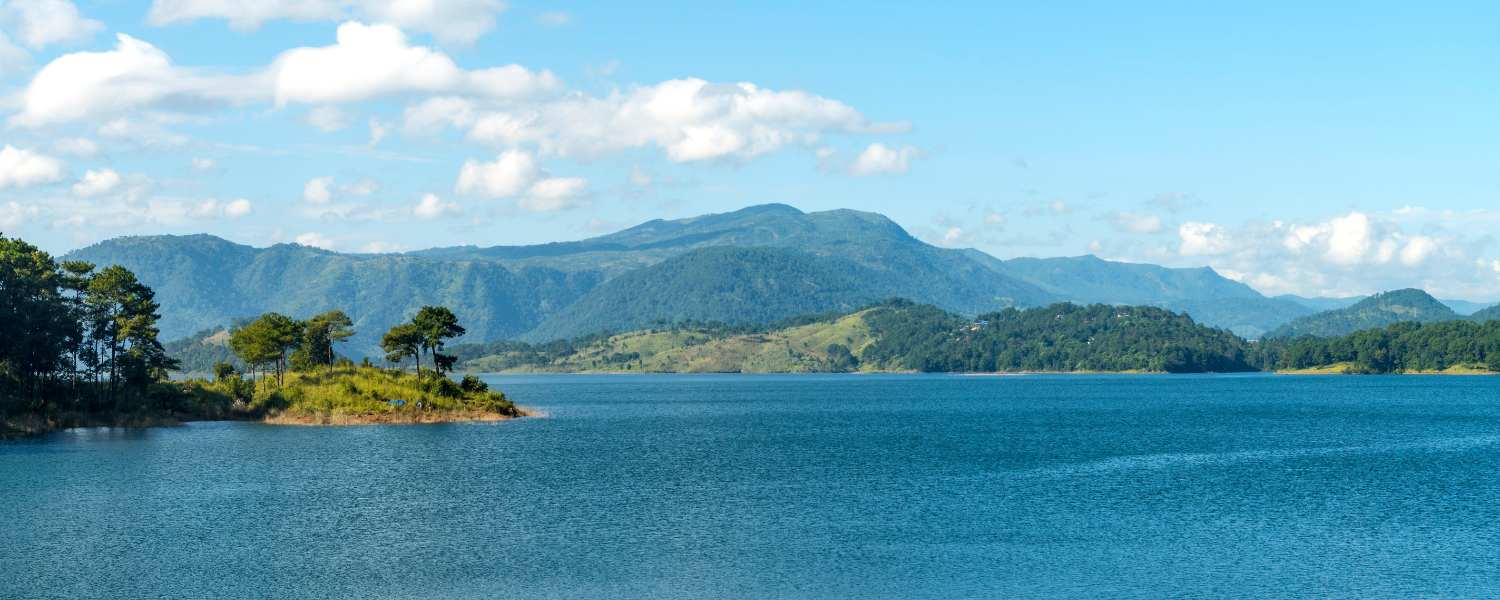
Known as the ‘Lake of Tears,’ Umiam Lake near Shillong is a mesmerizing artificial reservoir surrounded by hills and lush greenery.
Umiam Lake, also known as Barapani, is a captivating reservoir nestled amidst the hills of Meghalaya.
The Umiam Lake is a perfect backdrop for relaxation, with its panoramic views and cool breeze. Visitors can unwind by the lakeside, absorbing the beauty of the surroundings.
Whether engaging in water sports or simply enjoying a stroll along the shore, Umiam Lake is a must-visit destination for those yearning for nature’s embrace.
23. Dampa Tiger Reserve, Mizoram
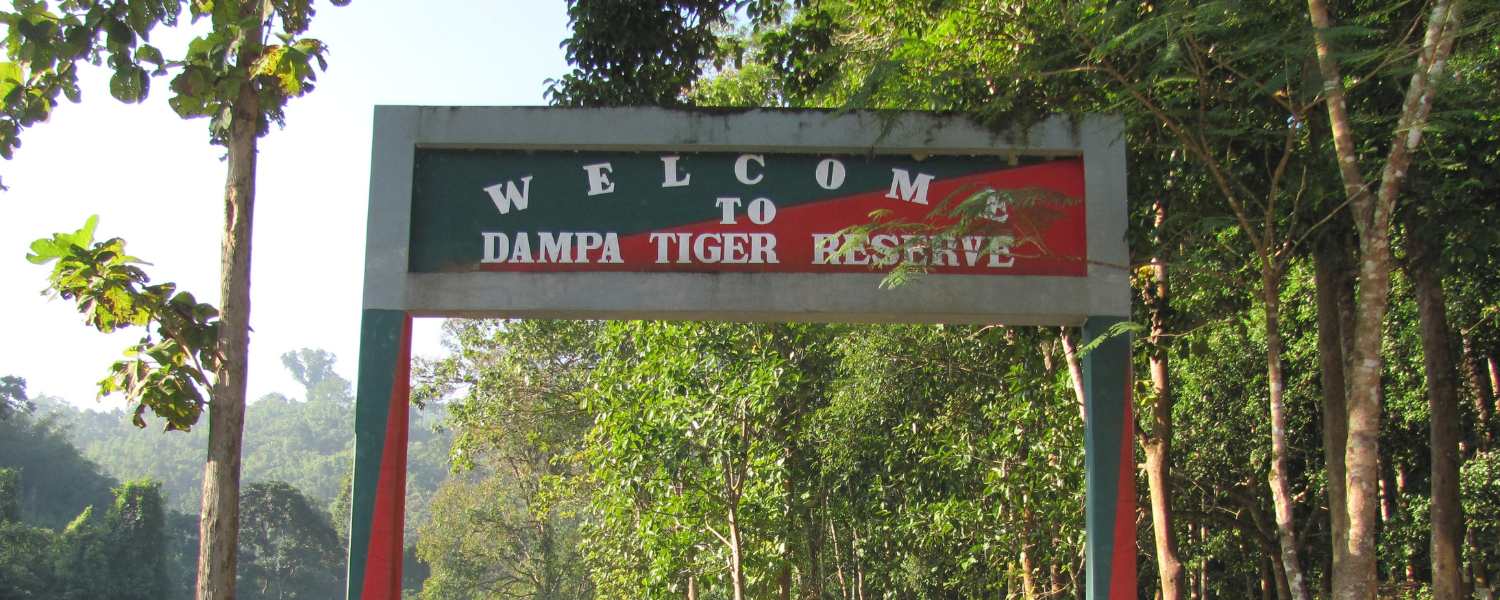
For wildlife enthusiasts, the Dampa Tiger Reserve in Mizoram is a haven for biodiversity.
Home to various flora and fauna, including the Bengal tiger, Indian elephant, and Hoolock gibbon, Dampa Tiger Reserve provides an immersive experience in the lap of nature.
Trek through the dense forests, indulge in bird watching, and explore the vibrant ecosystem that defines this hidden gem in Mizoram.
Dampa Tiger Reserve in Mizoram unfolds as a pristine wilderness, inviting adventure seekers and wildlife enthusiasts to witness its natural wonders.
The reserve, known for its dense forests and diverse fauna, is a crucial conservation area in the region.
It provides a habitat for various species, including the elusive Bengal tiger, making it a paradise for wildlife enthusiasts.
The lush landscapes of Dampa Tiger Reserve are adorned with a symphony of sounds from the residents and migratory birds.
Trekking through its trails offers a unique opportunity to connect with nature, appreciate biodiversity, and contribute to conservation awareness.
The reserve is a testament to Mizoram’s dedication to preserving its ecological treasures.
24. Dimapur, Nagaland

Dimapur, the largest city in Nagaland and one of the best places to visit in North East India, is a melting pot of cultures and traditions.
Explore the ancient Kachari ruins, which date back to the 10th century, providing a glimpse into the region’s historical significance.
The bustling Hong Kong Market is a vibrant hub for traditional Naga handicrafts, textiles, and spices shopping.
Dimapur’s unique blend of ancient history and contemporary culture makes it a compelling destination in Nagaland.
Dimapur, the largest city in Nagaland, welcomes travelers with a blend of historical richness and contemporary vibrancy.
The city serves as a gateway to Nagaland’s unique heritage and offers a fascinating juxtaposition of the old and the new.
One of its notable attractions is the Kachari Ruins, providing a glimpse into the region’s ancient history.
The vibrant local markets of Dimapur offer a sensory delight, showcasing the traditional Naga way of life.
The markets are a treasure trove for those eager to explore and understand the local culture, from handicrafts to local delicacies.
Dimapur sets the stage for a deeper exploration of Urban Life in Nagaland cities, with its rich tapestry of traditions and modern urban experiences.
25. Gurudev Kalicharan Brahma Wildlife Sanctuary, Assam

Located in the heart of Assam, the Gurudev Kalicharan Brahma Wildlife Sanctuary is a testament to the region’s rich biodiversity and commitment to conservation.
Named after Gurudev Kalicharan Brahma, a revered figure in Assam’s cultural and social fabric, the sanctuary covers a substantial expanse. It is a haven for diverse flora and fauna.
The sanctuary’s lush landscapes are adorned with many indigenous plant species, creating a thriving ecosystem.
It is home to diverse wildlife, including elephants, tigers, leopards, and various bird species. The conservation initiatives highlight the dedication to protecting these precious natural resources.
Visitors to the Gurudev Kalicharan Brahma Wildlife Sanctuary can immerse themselves in the beauty of nature through guided safaris, nature trails, and eco-friendly accommodations.
The sanctuary provides a unique and immersive experience for tourists and contributes significantly to environmental education and awareness.
As you explore the sanctuary, the cultural significance becomes apparent. The nomenclature pays homage to Gurudev Kalicharan Brahma, emphasizing cultural and environmental values integration.
This sanctuary is not just a wildlife haven; it reflects the harmonious coexistence between nature and humanity.
Conclusion
As our Places to Visit in North East India ends, it leaves us with a profound appreciation for the cultural diversity, natural beauty, and warm hospitality that define this enchanting region.
The hornbills, the misty hills, the floating islands, and the ancient monasteries – each destination we explored has added a stroke to the masterpiece that is Places to Visit in North East India.
It beckons travelers not merely to visit but to become a part of its rich narrative, to embrace the untouched wonders, and to tread lightly on landscapes that have stories etched in every fold.
May this journey inspire wanderlust and a deep respect for the intricate tapestry of cultures and ecosystems that thrive in the North East?
The odyssey may end, but this region’s memories and allure will resonate, inviting all to return and explore more of its hidden treasures.
